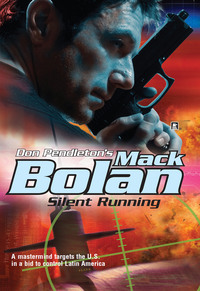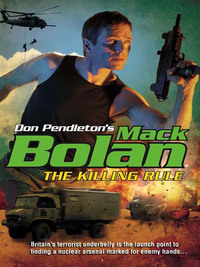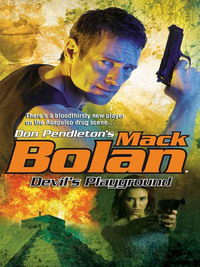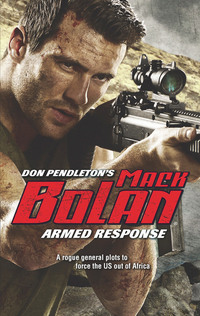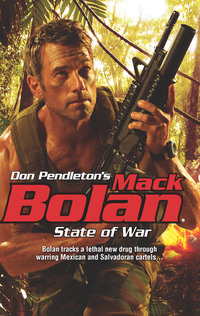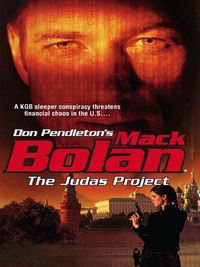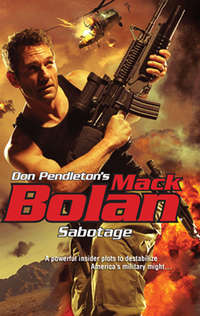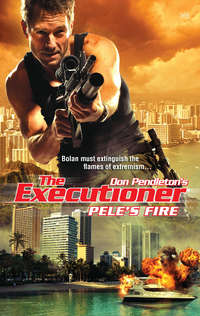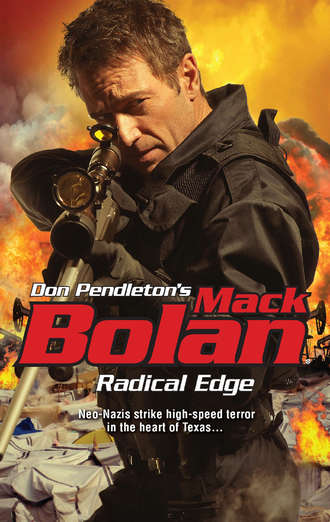
Полная версия
Radical Edge
They boiled through the opening like angry ants, firing without aiming. Two had heavy pistols; a third had a semiauto MAC-11. Bullets tore runnels in the floor, the walls and in the stunned woman on the floor behind Bolan. She yelped once as her fellow terrorists killed her.
Bolan breathed. He didn’t think about the enemy fire; he didn’t let the urgency of the moment push him to clumsy haste. He simply aimed and fired, aimed and fired. The 20-round magazine shot free as if of its own accord; the spare magazine rose in his off hand in a single, fluid movement. Then he was racking the slide as he rolled through the filth and debris on the floor of the house, coming up to engage the enemy, pulling the Beretta in close to his body.
He fired from retention, blasting away as the skinheads crashed into him, colliding with him in their panicked rush. He heard the grunt of the first man’s death as 9 mm hollowpoint rounds from the Beretta tore into the skinhead’s gut three at a time. The weight of the collision bore the Executioner back to the floor, under the dying man, his blood soaking them both.
“Get him! Get him!” someone shouted.
“Renny’s in the way!”
“Screw Renny! Kill the bastard!”
Bolan rolled the hapless and dying Renny off his chest to the side. From his back, he had only his legs to protect him. It was enough. As the pair continued to push toward him, dumbly rushing on top of him, he snapped a savage piston kick into the closer man’s shin. His heavy combat boot struck with enough force to produce an audible crack.
The scream the skinhead made was inhuman. Bolan drew his Beretta through an arc that covered both the screaming man and the confused skinhead behind him. He pulled the trigger twice for each, taking them out of play.
Covered in blood, sawdust and pieces of trash, Bolan surged to his feet. He was nearly through the doorway to the rear of the house when yet another skinhead terrorist collided with him, this one from behind.
Instinct had Bolan swiveling before the skinhead could complete the attack. He fired the Beretta empty as the terrorist, an enormous bodybuilder type wearing only camouflage pants, smashed him against one of the plywood walls. The skinhead roared and pulled a double-edged dagger from a leather sheath on his belt.
The Executioner was faster.
He opened his hand and let the Beretta fall away. From his waistband he drew the black-coated Sting dagger. Locking his left hand in an iron grip on the skinhead’s knife arm, he succeeded in stopping the blade as it slashed toward him. The wounded bodybuilder howled again, his eyes bulging with shock and pain.
Bolan’s knife stabbed into a brick wall. The barrier constricted and now the soldier’s own wrist was being crushed under his opponent’s left hand. The two men were frozen like that for an instant, the terrorist’s strength slowly ebbing from his wounded body, his breath coming in rasps and snarls as he tried to bull Bolan over with his superior size.
The soldier had been careful to position his hand on the terrorist’s upper arm, where the dagger could not catch him. The skinhead had taken no such precaution. Bolan curled his dagger around the other man’s wrist, carving his way through and out of his viselike grip.
The bodybuilder didn’t react as Bolan cut to the bone. The man’s tendons gave way, and as they did so, his grip on Bolan’s arm released. The Executioner shoved the knife deep into his flank, jamming the short, double-edged blade in and out.
Finally, the skinhead’s strength gave out. His resistance dissolved and he crashed to the floor like a felled tree.
Bolan left the knife lodged in his enemy, scooped up the Beretta and dropped to one knee, ready to slam the other into the dying skinhead’s chest, should he rally and try for another charge. The rattle that caught and churned in the big man’s throat belied any horror-movie last stands. Bolan waited nonetheless, listening carefully for some sign of further resistance.
He counted off a full two minutes in his head. Most men thought themselves patient, but given a full minute of complete silence, they started getting anxious. Bolan was depending on that. If there were more enemies hidden with the house, he would flush them.
He waited through another full minute. Something wasn’t quite right. Scanning the room, he stood, holding the bloody Beretta at the ready. Bracing the machine pistol with his off hand, he took up a position in the doorway. From this vantage he could see the last room of the house, from which the enemies now piled on the floor had come. It was a bunkhouse of sorts. Old wooden twin beds, never intended to be stacked, were sitting one atop another, nailed in place with cross-braces of plywood and metal wire. A makeshift table in the center of the room—just a large wooden utility spool—was piled with cards, trash and empty bottles.
“Striker to G-Force,” Bolan said quietly. He shifted to his right.
The shots that came were fired from underneath the farthest of the “bunks,” ripping through the mattress and tearing holes in the wall a good three feet away. Bolan simply flicked his Beretta’s selector to single shot, took his time aiming, and squeezed off a single round. The bullet punched a hole through the concealed skinhead’s mattress where his skull would be. The hole bloomed crimson and movement from underneath the bed stopped.
Bolan let out a breath.
“G-Force here,” the voice in his ear said.
“G-Force” was Jack Grimaldi’s code name. The Stony Man pilot was even now somewhere overhead, far enough off that the whirring of his chopper’s rotor blades wouldn’t tip off any hostiles. Bolan wore a tiny earbud transceiver, designed in part by Stony Man electronics expert, Hermann “Gadgets” Schwarz, which transmitted the soldier’s words to Grimaldi and relayed critical communications back to him. The earbud could be connected to Bolan’s secure satellite phone if required, but at the moment, he and his pilot were just connected locally. Grimaldi was Bolan’s lifeline in the sky. Should he become enmeshed in a situation he truly could not handle, Grimaldi would descend, guns blazing. More than once, a well-timed air strike with his colleague at the stick had saved Mack Bolan’s life.
“Stand by, Jack,” Bolan said quietly. He swapped 20-round magazines in the Beretta and ran his hand over its slide. The knife edge had cut a deep gouge into the well-worn bluing on the steel, but hadn’t damaged the machine pistol’s function. He eased the weapon back into its custom leather shoulder holster.
“You forgot about me, cop,” said a voice behind him. “Put your hands up or I’ll just put one in your back.” The shotgun that racked behind him for emphasis had already been chambered. Bolan heard the heavy thump of the loaded 12-gauge shell hitting the debris on the blood-strewed floorboards.
“I’m not a cop,” Bolan said, not moving. His hand was still on the Beretta in its holster under his arm. “I was hoping I could take you alive. You may have information I need.”
“I don’t know jack,” said the skinhead whom Bolan had kicked unconscious. “They don’t trust me with nothin’. I do what I’m told and I like it that way.”
“Figures,” Bolan said.
“Ain’t no way I’m going quietly. I ain’t givin’ up nobody. You ain’t takin’ me alive,” the skinhead said.
“I’ve learned to live with disappointment,” Bolan said. He pulled the trigger.
The bullet fired through the open rear of the leather shoulder holster, the muzzle-flash burning the back of Bolan’s shoulder. Turning, he left the weapon where it was, not knowing if shooting from within the holster had prevented the action from cycling properly. He ripped the Desert Eagle from its Kydex scabbard and extended the weapon, snapping the safety off. The skinhead had taken a round through the heart and was dead.
“You okay down there, Sarge?” Grimaldi said through Bolan’s earbud.
“Affirmative. I had a brief complication.” He looked down at the dead terrorist. “It’s resolved now.”
“Roger.”
“Stand by,” Bolan said. “I’m going to need you to signal the Farm for a cleanup crew.”
“Standing orders on that just came through from Barb,” Grimaldi said, referring to Barbara Price, Stony Man Farm’s mission controller. “She has a blacksuit contingent on hand to liaise with local law enforcement, make sure the dead bodies get written up the right way.”
“Another drug deal gone wrong?” Bolan asked.
“Or something like that,” Grimaldi said. “Maybe swamp gas, a weather balloon…”
“Or a classified training mission,” Bolan supplied. He could hear Grimaldi chuckling in his earbud.
“Yeah,” said the Stony Man pilot. “You’ve got it exactly.”
“All right. Give me a minute to finish up here. Then we’ll hit the second safe house.”
“I assume negative contact?”
“Correct,” Bolan said, his voice carrying a hard edge of irritation. “He’s not here.”
It had been a toss-up determining which of the two safe houses to hit first. This one was farther out than the second, which stood in a residential neighborhood on the outskirts of Alamogordo. Bolan had opted for the more remote location first, hoping that, with Shane Hyde in custody, it wouldn’t be necessary to risk a firefight in a more populated area. Now they would have to take that step, and quickly. Vermin had a way of relaying word to one another, even where no apparent means of communication existed. Mack Bolan suspected that all criminals and predators shared, if not a sixth sense, then a heightened cunning that made them wary of situations and scenarios out of the ordinary. Losing contact with the crew here at the safe house would tip off Hyde’s Twelfth Reich terrorists nearby. Of that Bolan had no doubt. He and Grimaldi were already on the clock.
Bolan removed his secure satellite smartphone from one of the pouches on his blacksuit web gear. The phone was equipped with a high-resolution camera, which he used as he moved from corpse to corpse, still cautious, expecting no resistance but prepared to be surprised. At each one, he either leaned in and toed the body over or grabbed a hank of hair and pulled the head back, photographing each dead man—and the dead woman—for Stony Man’s files.
The images would be relayed automatically through the smartphone’s data link to Stony Man Farm, where Kurtzman and his cybernetics team would run them through facial recognition software. These would be cross-referenced with the Farm’s sometimes extralegal databases linked to multiple law-enforcement systems, including those of Interpol. The Farm’s files on the individual terrorists, where appropriate, would be updated to reflect their new status as “deceased.”
Each bit of information was, Bolan knew, a potential puzzle piece to solve future problems. Even data that closed doors was useful, for it helped draw boundaries in the Stony Man sleuths’ search for what was missing.
The frame of the safe house began to rattle, causing dust to filter down from cracks and crevices in the ceiling. The throb of the chopper’s rotors was as familiar as a heartbeat to Bolan, who had made his bones on battlefields far removed, but no less deadly, than this one. The machine that Grimaldi brought in for a landing was, at first glance, the familiar Army Black Hawk. The careful observer would know, however, that the helicopter was anything but.
Bolan’s ride was, in fact, a highly modified HH-60G Pave Hawk, itself a heavily upgraded version of the Black Hawk. The chopper’s fuel capacity had been effectively doubled with the addition of external fuel tanks. Its integrated inertial navigation, global positioning, Doppler navigation and satellite communications systems had the latest Stony Man augmentations, including the encryption technology Grimaldi needed to exchange data and voice with the Farm without fear of being intercepted.
Grimaldi had explained to Bolan, during their flight to the safe house, that the Pave Hawk had an automatic flight control system, including forward-looking infrared enhancement for low-light and night ops. The chopper’s ancillary equipment included a six-hundred-pound hoist with a two-hundred-foot range, full infrared jamming and electronic countermeasures, including chaff and flares, color weather radar and an automatic anti-icing system.
More importantly, one of the two crew-served
7.62 mm machine guns had been replaced with an electric M197 Gatling gun. The three-barreled automatic cannon fired 20 mm rounds at rates of fire up to 650 rounds per minute, all controlled remotely from Grimaldi’s seat. While the Pave Hawk wasn’t as heavily armed as the Cobra and Apache gunships Grimaldi had often flown in support of Bolan and other Stony Man personnel, both men were confident the chopper’s offensive capabilities were sufficient to this mission. What Bolan needed, more than airborne firepower, was the speed and range of the Pave Hawk. Its large extra tanks fueling twin General Electric T700-series motors, each pushing almost 2,000 horsepower, would get him where he needed to be as quickly as was practical.
Bolan boarded the Pave Hawk as the machine started to lift into the air once more; the runners barely had time to kiss the ground. As he piled in, Grimaldi looked back from the cockpit.
“Forgive the observation, Sarge,” he said, “but you look absolutely pissed.”
“I am,” Bolan said. He strapped himself into one of the seats. Shifting the FN P90 on its sling, he looked the weapon over, removing the magazine and checking the action. He had spent a lot of time rolling around on the floor of the safe house, fighting in close contact. He needed to make sure his weapons would function when he called on them. The FN seemed none the worse for wear for riding along with him through the misadventure.
“Are you injured, Sarge?” Grimaldi called back. His earbud transceiver broadcast his words to Bolan despite the noise of the rotors overhead. He looked worried.
“It’s not my blood,” Bolan said. The front of his blacksuit and portions of his web gear were stained darker than the rest. He picked several splinters from the latter and from the crease of his canvas war bag before removing, from the bag, a compact cleaning kit. Then he turned his attention to his pistols.
John “Cowboy” Kissinger, the Farm’s armorer, would give him grief for the gouge in the 93R’s slide. He could almost hear the man’s commentary now. Each of the weapons Bolan was issued had been combat-tuned, in most cases by Kissinger’s own experienced hands. The goal was always to increase accuracy while enhancing reliability, goals that too often might seem mutually exclusive. Having spent years responsible for selecting and maintaining his own hardware, Bolan was no stranger to the demands on the Farm’s armorer. He appreciated the support Kissinger provided.
The Beretta had, after all, saved his life.
Grimaldi called out their estimated time to the second target zone. He looked back at Bolan again. “Sarge,” he said, “you okay?”
“Yeah,” Bolan muttered. “But I’m mad, Jack. We’ve just left a trail of corpses behind us, and we’re not much further along. Hyde may or may not be at the second safe house. If he’s not, we keep moving through our priority list.”
“That’s the plan,” Grimaldi said. He looked at Bolan as if unsure where the soldier was going.
“They’re wasting lives,” he explained. “Hyde and his hate-filled kind. Terrorists, predators of every stripe. They have motivations, Jack, and while they’re all equally deserving of being put down, as Hal put it, some make more sense than others.” He cleaned the Beretta as he spoke. “Hyde and his ilk want power, sure, but they’ll never hold it. Power is an abstract to them. They wouldn’t know what to do if they were suddenly in charge, suddenly the kings of their own white-as-snow empire. They kill not for power, not for political change, not for money, but because they hate.”
“We’ve faced a few who answered to that description,” Grimaldi said.
“Yeah, and every time, they were wasting lives.”
They rode in silence. The thrum of the rotor blades vibrated Bolan’s chest. He let his hands work as if of their own accord; he could disassemble, clean and reassemble the familiar Beretta 93-R in the dark, on the back of a camel, in a sandstorm. The image made him chuckle despite his stern mood. The phrasing was Barbara Price’s, shared in a moment’s intimacy after the pair had spent some meaningful and only too rare downtime together. Their on-again, off-again relationship was the most Bolan could offer her. It was, for now at least, something she could accept. Neither pushed the other; they were professionals who knew only too well how quickly fates could turn.
He checked the fit and draw of his Beretta in the custom shoulder holster. The leather had been singed by muzzle-blast but wasn’t otherwise damaged. Replacing the machine pistol’s 20-round magazine, Bolan holstered the weapon, topped off the magazine in his Desert Eagle and secured the hand cannon in its Kydex scabbard.
“Jack,” he said. “Time.”
“Sixty seconds, Sarge.”
Good.
It was time to get back to work.
CHAPTER THREE
Bolan moved briskly through the rear lots of the string of well-tended ranch houses, his boots crunching on gravel and through scrub. There were no manicured green lawns to be found here. Such suburban affectations weren’t practical in this climate. The houses were nonetheless nicely maintained. Some yards were strewed with toys and dotted with play equipment—a sobering reminder that innocents weren’t far removed from the target area.
The hovering helicopter would, of course, have exposed their operation immediately. Grimaldi had been forced to put Bolan down far enough away from the second safe house to prevent the presence of the Pave Hawk from blowing the surprise. While he hadn’t yet seen anyone on the street—the neighborhood was, thankfully, a quiet one—he was certain he had been noticed through windows he passed. He was making no effort to conceal himself, no pretense of being a civilian. The sight of a black-clad man armed for combat and carrying an assault weapon was sure to have the residents dialing 911.
The fallout from that would be managed by Barb Price’s blacksuit liaisons, trusted field operatives and veteran commandos in their own right, who would be running interference for Bolan as they helped the Farm coordinate the thorny issues of jurisdiction and authority. It was just those issues that would have Brognola’s phone ringing before too long, as the many agencies with dogs in the fight started arguing with Justice about just who should be able to tell whom what to do.
Bolan answered to himself first.
The ergonomic and futuristic P90 in his hands was fully loaded. He had semiautomatic and fully automatic modes of fire at his disposal. The two-stage trigger, tuned by Kissinger and similar to that of the Steyr AUG, provided him with crisp fire control from which he could milk single shots or withering, sustained automatic fire.
“Sarge.” Grimaldi’s voice was clear in Bolan’s earbud. “Something strange is going on. I’m getting telemetry from Barb. She says emergency services are being rerouted to your location.”
“Rerouted?” Bolan asked. “What do you mean?”
“Something about a massive false alarm across town,” Grimaldi said. “Multiple mobile phone calls about a fire and hostage situation. Barb says it’s sketchy, but they’re getting confirmation in now. A block of vacant commercial properties was set ablaze, but there are no hostages. Alamogordo SWAT is reporting negative contact. You thinking what I’m thinking?”
“Decoy,” Bolan said. “It’s a decoy play.”
“Barb says they’re tracking back to multiple 911 calls reporting gunfire in your target zone,” Grimaldi said. “Stuff that took a backseat to what they thought was a terrorist incident in the other direction. Sounds awfully convenient. Sarge, I think we may have missed the party.”
Bolan picked up the pace, jogging now, the FN P90 in his grip as he moved. He didn’t like the sound of that, not at all. A decoy might mean some kind of sacrifice-and-breakout maneuver on the part of Hyde’s men, perhaps to cover the terrorist leader’s withdrawal. There were countless ways the Twelfth Reich cell might have been tipped off to the threat. He couldn’t guess at them. He could only hurry.
As he neared the safe house, he saw smoke. A small fire seemed to be burning at the back of the structure. Neighbors were already coming out of their homes, pointing and crouching, afraid to stand in the open but too curious or worried not to look. When they saw Bolan, some shrank back. One woman screamed. Another man shouted that there was some kind of trouble, pegging Bolan as someone in authority. The soldier could only keep running. He was now closing on the safe house.
The house was, like the others around it, a low ranch. This one had started out a muddy tan, then bleached an uneven beige by the merciless New Mexico sun.
There was a dead man on the porch.
The butt of the stubby FN P90 was already positioned against Bolan’s body; he snapped the weapon up to acquire the sights. The man on the porch was down, lifeless, his limbs turned at angles no living human being could endure. He wasn’t the threat. Whoever had put him there was.
“Hey! What’s happening?” a young man, just a teenager, called from the neighboring house.
“Go back inside!” Bolan warned. “Justice Department!” The kid slammed the door as if monsters were barking up his walk.
Bolan hit the porch in a combat crouch. His boots scattered brass shell casings, which were thick on the porch floor. The front of the house had been shot to pieces, peppered with so many bullet holes that it looked like Bonnie and Clyde’s last ride. He couldn’t tell, from this vantage, exactly what was producing the black smoke curling from the rear of the building.
He struck the door with a powerful front kick, near the knob, not bothering to try it. Molding flew in three directions as the flimsy, hollow-core door slammed against the interior wall. Bolan ignored that; he was already charging inside, ready to flood the room with 5.7 mm rounds.
The living room was a slaughterhouse.
A smoke alarm was squealing. The fire from the rear of the house was gaining momentum; its crackling was growing louder. Smoke drifted in lazy clouds through the L-shaped living area, escaping through bullet holes spidering the bay window at the front of the home. The plaster walls were pocked with similar holes and sprayed with blood. More blood soaked every visible piece of furniture. There was a dead woman on the couch, two dead men on the floor near a card table and a pair of reclining chairs, and another dead man near a very old and very shattered tube television. The man near the television had almost no head. He had taken what was likely a shotgun blast at close range.
Shells were thicker here than they had been on the porch. Bolan crouched and, using a metal pen he carried in his web gear, fished up first one, then another. He checked half a dozen casings throughout the living room. All were .40 caliber. He pocketed several, careful not to touch them.
Crouched low, he moved from body to body, making sure. There were no signs of life. The house was a tomb. It was worse than that, however.
The dead hadn’t merely been neutralized; they had been mutilated, shot again and again in what could only have been postmortem overkill. Bolan filed that fact for analysis even as his mind worked overtime to make sense of what he was seeing.
Had the skinhead safe house been hit by a rival gang? A conflicting security firm? Counterterrorists, perhaps operating without authority on American soil? The first was possible; the second was unlikely, given the Farm’s contacts and Brognola’s knowledge of domestic security operations. The third was possible but didn’t seem to fit. Bolan had only too recently found himself caught between rival security and black-ops personnel from multiple countries, in playing bodyguard and escort to a Very Important Person whom he had to transport to Wonderland. Even at their most vicious, foreign kill teams wouldn’t have wasted the time and firepower necessary to do this kind of job on poorly trained skinhead combatants. An ops team from a nominally allied nation, like Israel, certainly wouldn’t kill so unprofessionally.




